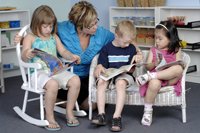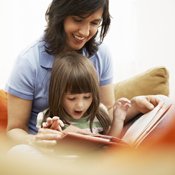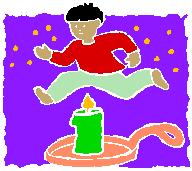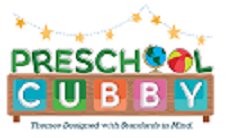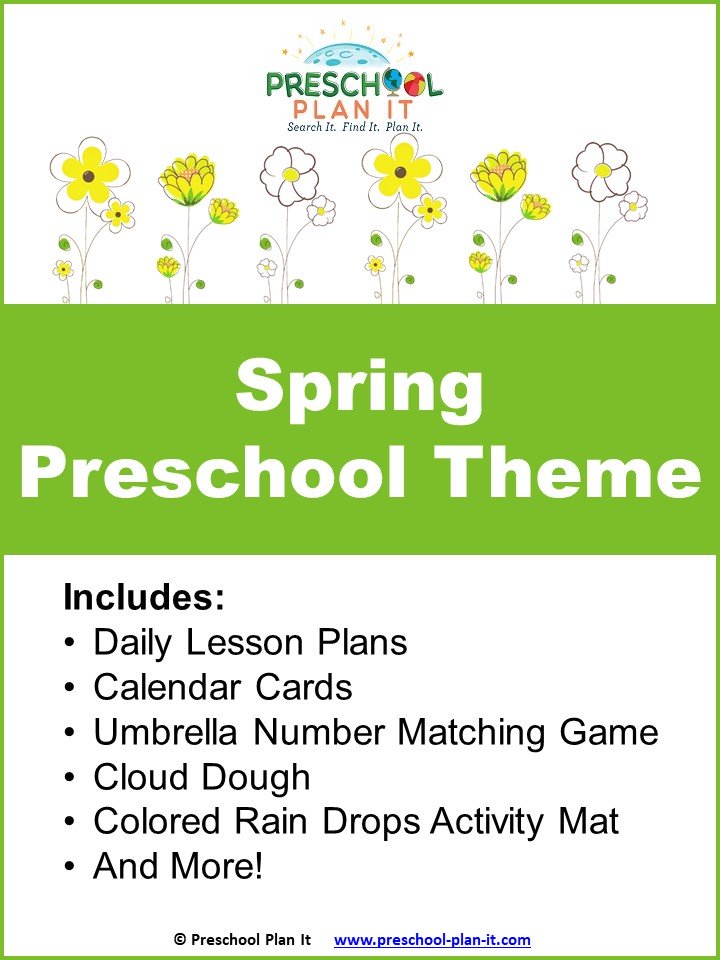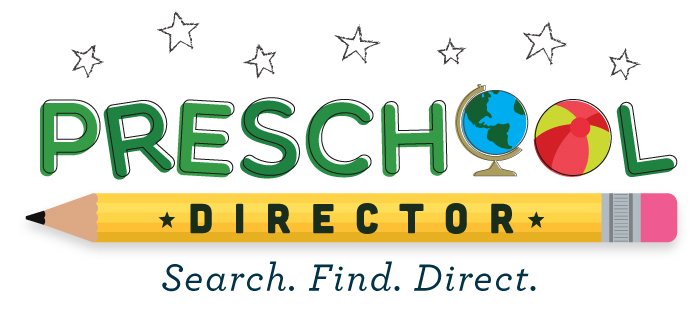Preschool Literacy Activities
These preschool literacy activities set the stage for children to get excited about reading and writing. Following you will find a list of preschool literacy activities that are appropriate for any early childhood classroom or home.
General Preschool Literacy Activities
- Hang clipboards in one or two spots in your classroom. Stock them with paper and attach a pencil. Encourage children to use them whenever they like. (Very popular in my classroom)
- Collect restaurant order pads, trucker's logs, tablets for shopping lists, small calendars, planning books, unused teacher planning books, etc. Put out a few favorites at a time. preschool literacy activities
- Collect menus, empty boxes, labels off cans, advertisements, maps, small phone books, cookbooks, etc. to use in various centers.
- Gather a variety of advertisements from businesses children will recognize. Label some unit blocks with the business name and logo. One logo on each block. Wrap clear packaging tape around the block to hold the logo so children can't peel it off. Children will build stores, offices and towns using these blocks. Children will enjoy reading these logos as well. KMART, WALMART, McDonalds etc. (with the golden arches of course.)
Preschool Literacy Activities - Name Recognition
Teachers often use name cards to dismiss children to go to the next activity. In preschool, name cards can be used in so many ways throughout the day!
Create a name card (on construction paper or index cards) a symbol and/or photo along with the child's name. You can also print the child's last name on the card and teach him to read that.
- Use the cards on your Circle Time mats for children to find their shape or name or picture for their spot to sit in.
- Use the cards to place on tables so children know where to sit for snack or other activities.
I typically let children choose where they want to sit during these activities. However, some days they just need a break from "their best best friend" or we need to break up some developing cliques or encourage new friendships!
- Use these cards to teach letters. Hold up one name card, ask the children to identify who the card belongs to. You can then confirm they are correct (they will have "read" the name based on their memory of the letters in the child's name or from the picture). You can then point to and state each letter in the child's name and then hand the child their name card.
Use Individual Chalk/White Boards.
You can teach children to identify the letters in their names or practice individual letters by giving them each a small chalkboard or whiteboard. Some ways to use them are:
- Make a set of alphabet cards and include capital and lower case on each card. Let the children use the cards as a model to look at while practicing letters or names.
- Write each child's name on his board for him leaving a little space between each letter. As you show a letter card to a small group, each child erases that letter however however many times it appears in his name.
These small white boards can be purchased in bulk through Discount School Supply. My favorite is product #WWB10 (you can search for it in their store by clicking the link below!)
Another one of the preschool literacy activities for learning the letters in children's names takes more preparation than the one above. If you can do this on your computer it will probably save you a lot of time and work.
- Write the names of each child in your group on a piece of tagboard or card-stock leaving a little space in between the letters.
Make two copies of each name.
Cut the letters from one of the name strips.
Laminate the pieces and the remaining name strip.
The children place the letters over the letters in the name strip.
Preschool Literacy Activities - Dictation
Dication is when the child tells, or dictates, a story to you and you write down-VERBATIM-what they say.
Letting children dictate information is a preschool literacy activities that teaches them to see the relationship between the spoken and written word as well as reading. You can also encourage them to print their own stories, even if they can not recognize letters yet!
Some suggestions to incorporate dication in your classroom:
Writing Center
When your children are drawing, stamping, etc. in the writing center, ask them about their pictures and write down what they say. Attach the dictation to their picture for display, to take home or to put together with other students' papers for a class book!
Individual Stories
I am a big fan of Bev Bos. She is inspiring and motivational and when I read any of her books, I am reminded of why I am in this field! I had the opportunity to attend one of her conferences and left the conference completely excited with new ideas!
One thing she does is to go to a few students each day (meeting with each child once by the end of the week) and asking them, "What is your story?". She writes down whatever they tell her. I put this into action one year.
The first time I met with the children and asked them "What is your story?", they were not sure what to say! I told them I was going to write down ANYTHING they wanted me to...a story about them, their family, or a story they wanted to make up.
After 2 weeks of this, they ALL began asking me to write down their story each day!
Cooperative Stories
This is one of my favorite preschool literacy activities to do with the entire group at circle time!
I will start a story. It may be theme related, concept related or just random. I tell the children that we are going to create a book together and each of them will dictate their part, one at a time. I begin with:
"Once upon a time there was a ___________". If it is a random story, I will let the first child decide this first blank. If it is theme related, let's say Dinosaurs is our theme, I might start by saying "Once upon a time there was a dinosaur. And this dinosaur went to ___________". From here, I ask one child to go next.
Encourage them to use their vocabulary. For example, if the child says "And this dinosaur went to the doctors" ask the child WHY the dinosaur went to the doctor. You might then have this:
"Once upon a time, there was a dinosaur. This dinosaur went to the doctors because he needed a checkup." Now you ask the next child to add to it.
What I do is write down each child's name and what they say in the story. After Circle Time, as each child comes to the art table, we encourage them to draw or paint a picture to illustrate the part of the story they added. The staff writes each child's part of the story on a paper from my notes from Circle Time.
When the pictures are all complete, we staple them all together with the dictation page on the left and the child's corresponding picture on the left.
It is now a class book that the children LOVE to have read to them or read themselves in the Library!
EXTENSION: If you can, make color copies of the book and send a copy home with each child, along with their original piece of art work once you are done with it!
NOTE: Many teachers will place rules on cooperative writing such as "Nobody or thing can be killed in our story." or "No violence". I do not place these rules to begin with because many children use stories as well as dramatic play as ways to talk about fears or situations in life such as:
A pet dying.
Something they saw on television or a real life situation of someone they know being killed.
A bullying situation.
Another reason I do not limit it is because the children themselves will voice their opinions about violence. When a child once added that the dinosaur died, another yelled "NO! He can't die! That's not nice." The child who suggested it said, "But he was really, really, really sick and died." They came up with two solutions. First, the next child talked about how sad all the dinosaurs friends were that he died. Another, at the end of the story, said the dinosaur stood up. He was not dead. Just sleeping.".
This gave us an opportunity to talk to children throughout the day about the story. We found that the first child's grandmother had just died. The second child's grandfather had died and was told "He went to sleep and never woke up." We used this information to talk about death with families and incorporate some stories into the classroom.
For more information on discussing death with preschoolers and their families, check out my articles by clicking either of these article links:
Death of a Grandparent or Other Family Member
Children go through states of writing that begins with scribbling, drawing lines, zig zag shapes, symbols and eventually letters, inventive spelling and actual spelling. Encourage them to "write" their stories regardless of which state they are in!
Preschool Literacy Activities - Activities in a Bag
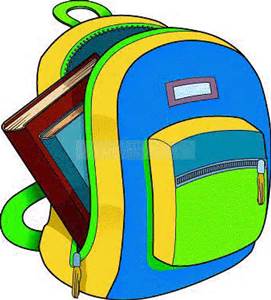
I LOVE Literacy bags! They are a wonderful way to involve your families in helping develop their child(ren)'s literacy skills! I used to work for a program called EvenStart. It was a federally funded program with the goal of doing this! i would visit each family at home each month and bring a new Literacy Pack, as we called them, to the family and pick up the old one!
These are great for ANY preschool program. You can purchase inexpensive backpacks from Amazon or ask families to donate any unused packpacks.
You then place items in the pack that encourage literacy. We always themed our bags (such as a Transportation Theme, Shapes Theme, etc.).
For each pack, you might include:
- 2-3 theme related, age appropriate books
- A journal book (it was fun for each family to read the previous user of the pack's notes on the books and activities)
- A puppet to use for acting out the stories
- Dry Erase board and dry erase markers
- Puzzles
- Sorts/counters and activities to do with them (match the letters to the letter cards, etc.)
Have the packs available with a sign out sheet. The parents borrow the packs as they want. OR, send a pack home once a month on a weekend you have deemed to be "Literacy Weekend"!
Be prepared to replace parts when necessary. Always check the bags when they come in and make sure everything is in good shape. Wash the bag and stuffed animal if they smell like smoke.
Preschool Literacy Activities Summary
There are many preschool literacy activities that are used to teach children the foundations for reading and writing. I hope you can use these ideas as a springboard for your own creative preschool literacy activities!
Here are some other preschool literacy pages you might be interested in:
Go to the main Preschool Activities Page
Go to Preschool Professor's HOME Page

